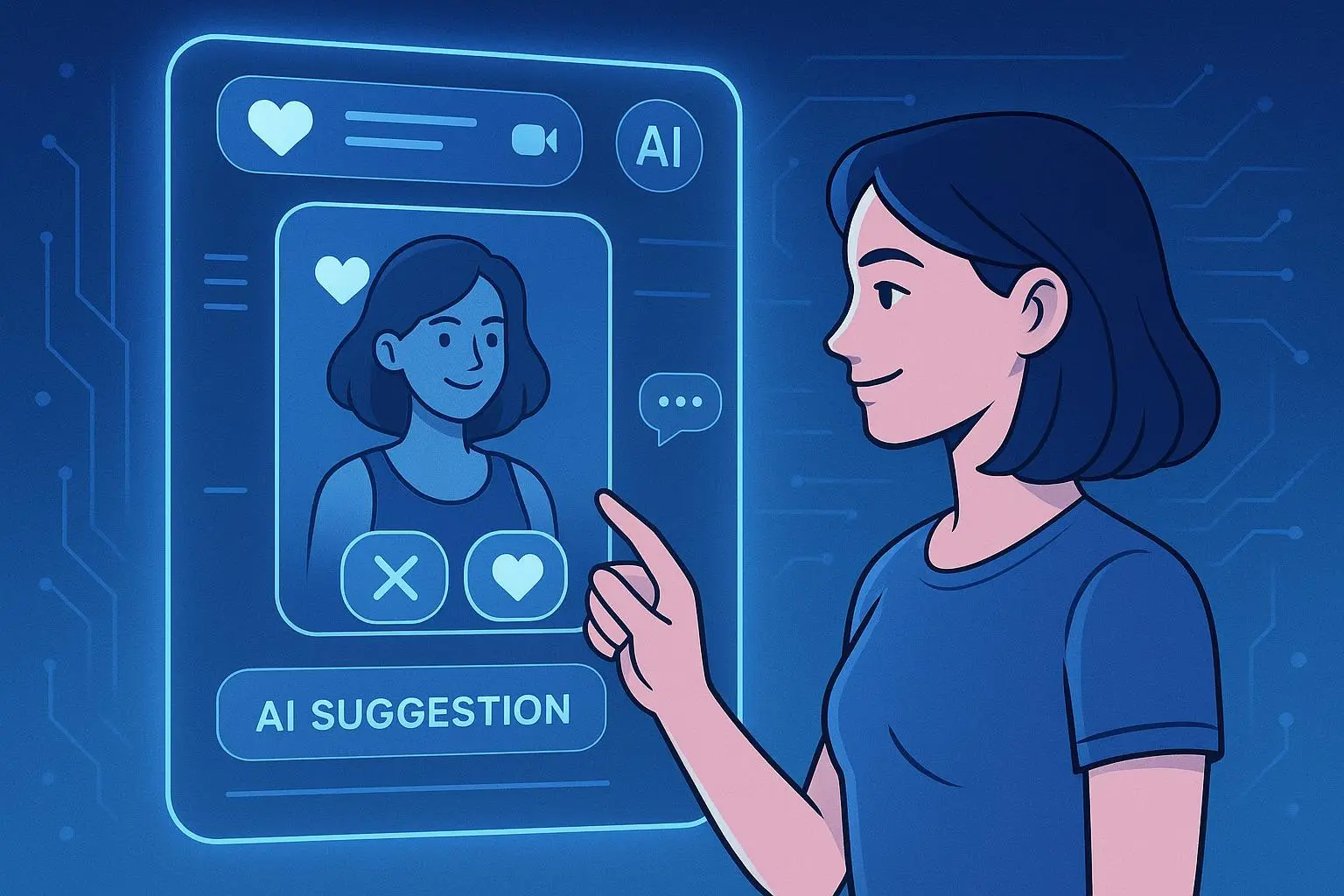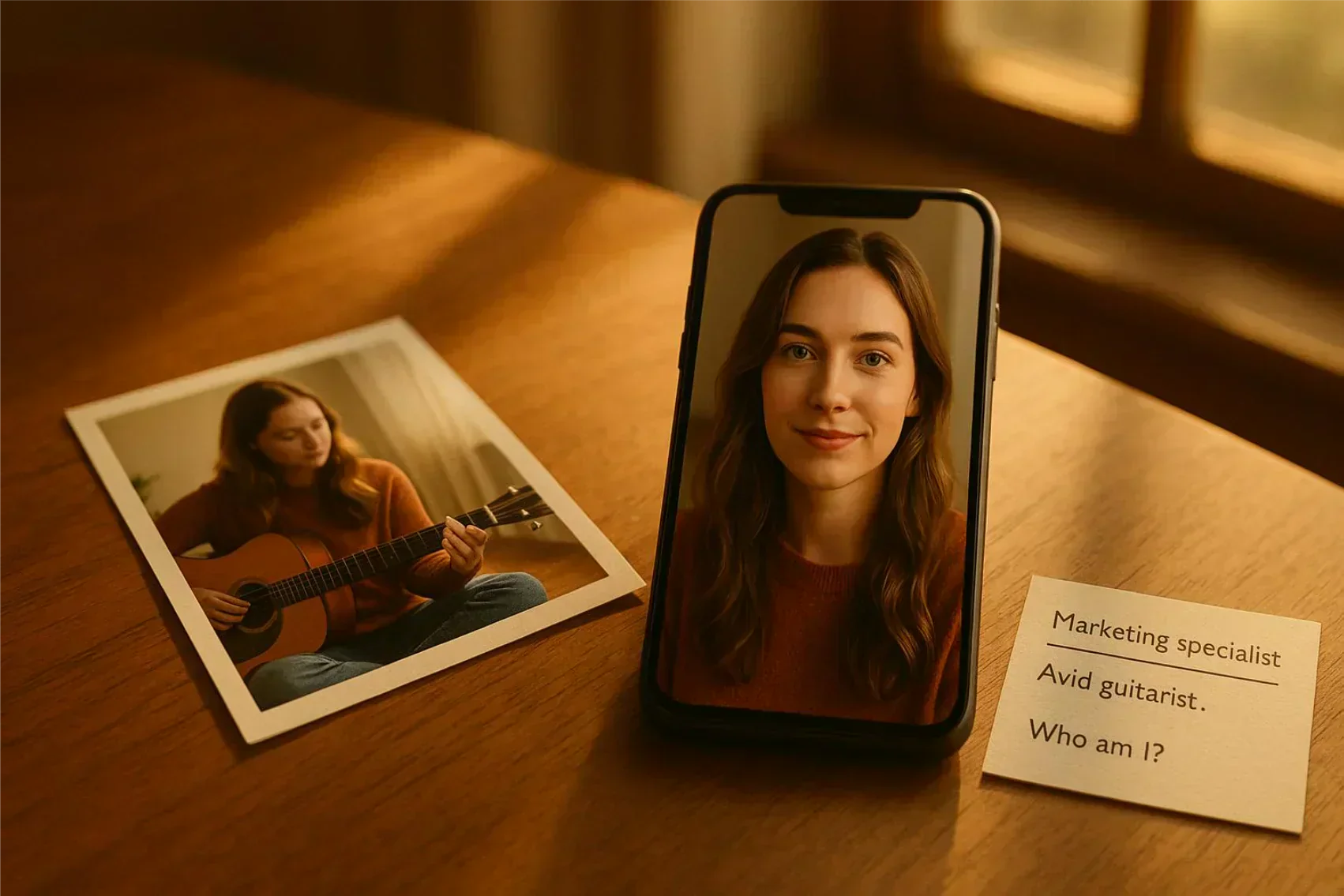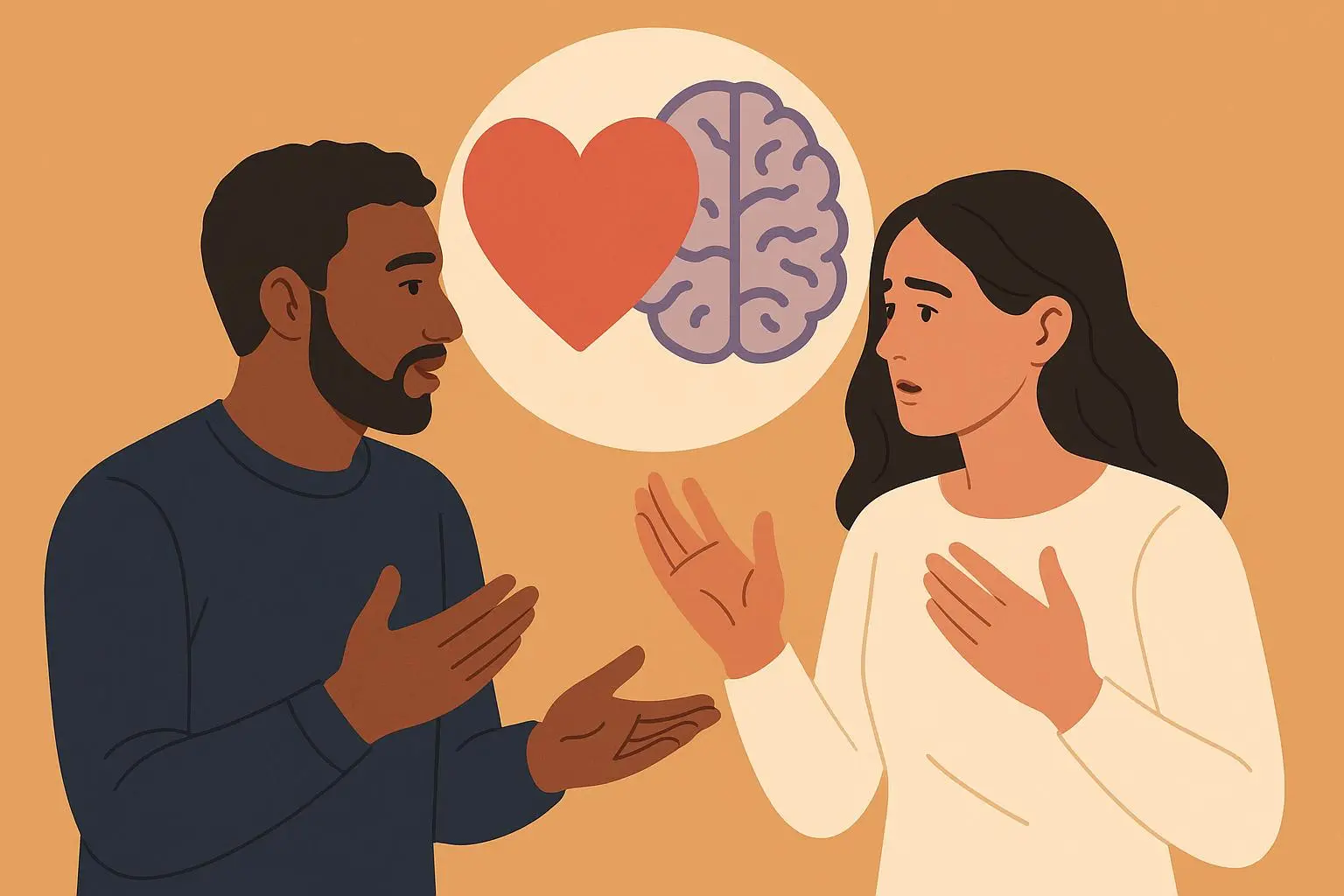
Dating App Trends 2025: Video, AI & Intentional Love
Published on 10/24/2025 • 9 min read
The swipe-right era is evolving. As we head into 2025, the digital dating scene is undergoing a seismic shift — moving beyond static profiles and endless swiping toward a more authentic, intelligent, and intentional way of connecting. If you’ve spent nights endlessly scrolling and wondered why conversations fizzle, the trends shaping dating apps this year offer real reasons — and practical fixes.
I still remember a night two years ago when I matched with someone who had a flawless photo gallery but wrote one-word answers and disappeared after the first message. That match taught me something measurable: after I started using behavior-focused apps and added a short intro video, my reply rate climbed from roughly 12% to about 28% over three months, and the number of conversations that turned into a date doubled. Small changes produced noticeable results — and that’s the promise of the trends below.
The AI Cupid: Hyper-personalized matchmaking
If matchmaking were a person, it would have gone back to school for a PhD. Algorithms have moved from simple preference filters to analyzing behavior and emotional signals. This isn’t just “people who like hiking see other hikers.” Modern systems examine how you communicate, which prompts make you smile, and even the cadence of your replies.
Why this matters: AI reduces noise. Instead of endless choices that cause decision fatigue, you get fewer but higher-quality matches. Anecdotally and according to early industry reports (pilot studies and company releases through 2024), apps that surface behaviorally compatible users report higher message reciprocity and longer initial conversations.
What this looks like in practice
- Behavioral analysis learns your ‘type’ by observing who you respond to and how you reply — not merely who you swipe right on.
- Compatibility scores factor in communication style, life goals, and core values.
- Predictive analytics highlight people likely to be active and responsive during your common online hours.
- AI-generated icebreakers are tailored to both profiles, replacing generic “hey” with meaningful, specific openers.
In my experience using a behavior-led app for six months, the matches I received were more likely to reply thoughtfully; my average reply length increased by about 40%, and three out of eight meaningful matches led to an in-person meet-up.
The unfiltered feed: video-first profiles
Photos are a highlight reel; video adds texture. A 20-second clip shows how someone laughs, speaks, and inhabits a moment in a way static images cannot.
When I swapped a primary photo for a short clip about a disastrous camping trip, I immediately noticed two changes: people referenced the story in their messages, and the matches I connected with had a sense of my humor before any text. Engagement on that profile rose — anecdotal evidence backed by multiple companies’ user data suggests profiles with video receive notably higher engagement, though exact numbers vary by platform.
How video changes the game
- Video intros give immediate context and personality.
- Prompted video responses convey tone and reduce misunderstandings.
- Casual in-app video calls with light filters or mini-games make first face-to-face chats less awkward.
- Live-streaming slots let people showcase hobbies in real time — imagine a musician sharing a quick set to potential local matches.
If you want to stand out, show your voice, not just your smile. Start with one 15–30 second unscripted clip: tell a short story, share a quirk, or describe a favorite habit.
Intentional dating and the niche-ification of love
Swipe fatigue drove a move toward intentionality. Whether you want a long-term relationship, something casual, or a community-driven approach, apps now let you say it clearly.
I once updated my profile to state I was looking for something long-term and added a badge for weekend hikers. Within two weeks I matched with three people who mentioned future plans in their first messages. That clarity saved time and emotional energy.
What intentional dating looks like
- Relationship-goal badges and explicit statements to cut ambiguity.
- Hyper-niche communities — from single-parent platforms to gamer-focused networks.
- Interest-based groups inside larger apps to meet people in shared micro-communities.
- New cultural norms like clear upfront communication about intentions.
Specificity is magnetic. The more precise you are about what you want, the more likely you are to attract people who match your timeline and energy.
The new digital etiquette
If dating is a dance, the music has changed. Digital etiquette in 2025 centers on clarity, consent, and decency. Small gestures of respect — clear rejections, consent-first messaging, response-time transparency — make the whole experience less draining.
One app I used introduced a gentle rejection template and an option to indicate typical reply cadence. The effect was simple: fewer awkward ghosting moments and clearer expectations about timing.
Emerging norms
- ‘Polite pass’ features make rejections kinder and reduce ghosting.
- ‘Clarity is kindness’: direct statements about interest levels are increasingly viewed as considerate.
- Response-time indicators manage expectations — slow replies may be personal preference, not disinterest.
- Consent-first prompts encourage asking before sending voice notes, videos, or shifting off-platform.
These small UX nudges change behavior over time, nudging the culture toward more respectful interactions.
Your wingman is an AI: dating assistants and how to use them
AI dating assistants — think Rizzman and similar tools — act as personal coaches. They analyze profiles, suggest bios, craft openers, and help draft replies.
I use an assistant when I hit writer’s block. Once, it suggested a playful opener that turned into a 12-message exchange and a coffee date; I edited the reply to sound like me. That balance — AI plus you — is crucial.
What these assistants do (short cases instead of a checklist)
- Profile optimization: one user I know swapped three photos based on AI suggestions and saw profile views increase by about 30% in two weeks.
- Conversation starters: an AI-generated opener helped a friend break an otherwise awkward silence; they turned it into a multi-hour text exchange.
- Response crafting: use AI to draft a warm reply, then add a personal detail before sending.
- Tone analysis: have the tool flag when your messages read blunt or overly formal, then humanize them.
Pros and cons
Pros: AI helps people with social anxiety, saves time, and can teach better messaging patterns. Cons: It risks producing a voice that isn’t genuinely yours, and overreliance can stunt conversational growth. There are ethical questions about consent when someone is effectively ghostwriting messages.
“Treat AI as a co-pilot, not the pilot.” Use it for ideas; always make the final message yours. [1]
Privacy best practices and transparency (small, actionable section)
As AI and video grow, protect your privacy and demand transparency.
- Use opt-in features: enable video verification or behavioral matching only if you’re comfortable with the trade-offs.
- Check permissions: limit access to contacts, precise location, and always review what data an app shares with third parties.
- Ask for algorithm transparency: prefer apps that explain which signals they use (e.g., response cadence, prompt engagement) at a high level.
- Store-sensitive content off-platform: don’t move to private messaging until you feel secure; consider temporary media features for early exchanges.
These concrete steps give you more control over how much tech shapes your dating life.
Practical steps to gain a competitive edge in 2025
Here are tactics I’ve used or seen work — small shifts with outsized payoffs.
Embrace video: show, don’t just tell
Record one 15–30 second unscripted clip. Tell a brief story or share a quirky fact. If you’re camera shy, record several takes until one feels natural.
Leverage AI — wisely
Use tools like Rizzman as brainstorming partners. Get an opening line, then personalize it with a detail only you’d know. Ask the assistant to write in your tone — sarcastic, warm, curious — then tweak before sending.
Be intentionally you
State your relationship goals and interests clearly. Include badges or short statements that say what you want. Specificity filters matches toward people aligned with your goals.
Communicate with clarity and kindness
If someone isn’t a fit, a short honest message beats ghosting. Try: “I enjoyed chatting, but I don’t feel a spark — wishing you the best.” Small acts of decency keep the ecosystem healthier.
Protect your authenticity
If you use AI, own the final message. Let your curiosity, humor, and values shine. Learn from AI suggestions instead of copying them.
What app creators are building — and what it means for you
Developers are adding features that promote consensual, honest, and efficient dating: better reporting tools, consent nudges, video verification, and transparent matching signals. Some platforms now test response-speed indicators or behavioral matching toggles. For users, this means less time on low-quality interactions and more time invested in people who matter.
Ethical questions to keep asking
With more powerful tools come thorny trade-offs. Are you comfortable with AI analyzing your messages to predict compatibility? Do you want video verification as a gatekeeping step? My pragmatic stance: use tools that empower you, but demand transparency and opt-ins.
If an app uses AI to match you, it should disclose, at least at a high level, which signals influence recommendations.
The human element still wins
After walking through the tech and etiquette shifts, remember: human qualities — vulnerability, curiosity, empathy, and humor — still determine lasting connections. Technology can bring the right people together, but it can’t manufacture genuine chemistry.
A few months ago I had a date where the conversation flowed with no scripts, no AI prompts — just two people listening. The app got us in the room; everything after that was organic.
Looking ahead: 2025 and beyond
Expect refinement. AI will better read emotional subtleties, video will become integrated and less performative, and niche communities will grow. The arc leans toward authenticity and efficiency: fewer matches, higher quality, and more meaningful first dates.
But trade-offs remain: sophisticated matching can reduce serendipity, video-first formats may favor those comfortable on camera, and AI assistants will keep raising authenticity debates. Being thoughtful about those trade-offs is part of being a conscious dater.
Final thoughts — how I’m approaching dating in 2025
I’m more selective, more intentional, and a bit more experimental. I let short video clips show what a photo could not, use AI when stuck but always tweak its suggestions, and state my intentions to avoid ambiguity. Most importantly, I try to treat people with straightforwardness and kindness — and I expect the same in return.
Takeaway: technology is a tool, not a substitute for who you are. Use it to amplify your best self, not to hide behind something you’re not. The future of dating promises better matches and kinder interactions — if we navigate it with honesty and a little common sense.
Happy swiping (or video-recording). May your matches be fewer, richer, and more connected.
References
Footnotes
-
Pew Research Center. (2024). The Future of Dating. ↩
Ready to Optimize Your Dating Profile?
Get the complete step-by-step guide with proven strategies, photo selection tips, and real examples that work.


